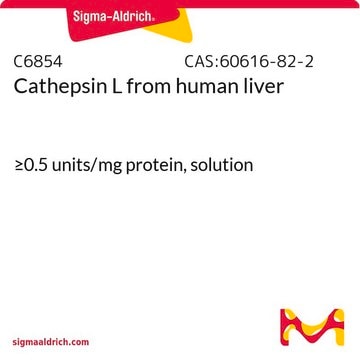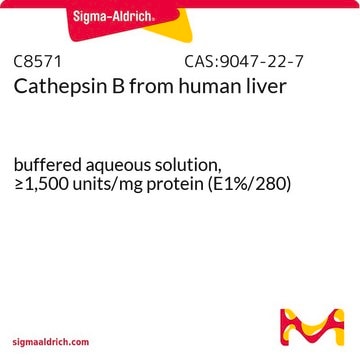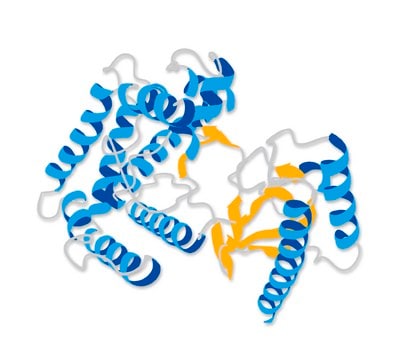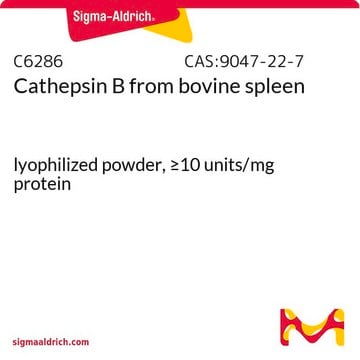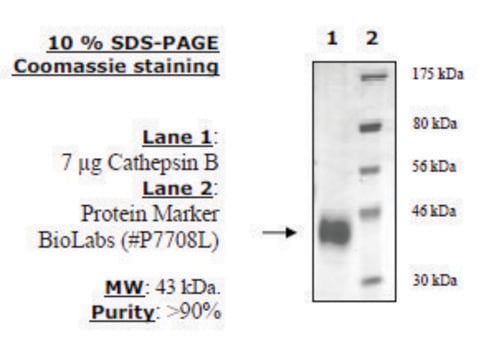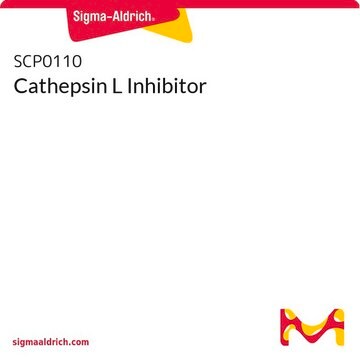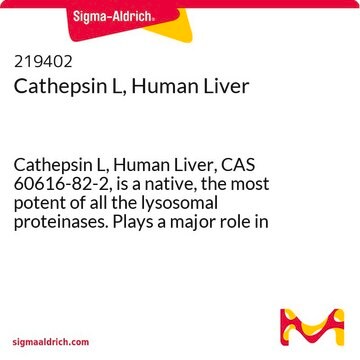SRP0291
Cathepsin L Active human
recombinant, expressed in FreeStyle™ 293-F cells, ≥90% (SDS-PAGE)
Sinônimo(s):
CATL, Major excreted protein (MEP)
Selecione um tamanho
Selecione um tamanho
About This Item
Produtos recomendados
fonte biológica
human
recombinante
expressed in FreeStyle™ 293-F cells
Ensaio
≥90% (SDS-PAGE)
Formulário
aqueous solution
atividade específica
≥3900 pmol/min-μg
peso molecular
36 kDa
técnica(s)
inhibition assay: suitable
adequação
suitable for molecular biology
nº de adesão NCBI
aplicação(ões)
life science and biopharma
Condições de expedição
dry ice
temperatura de armazenamento
−70°C
Informações sobre genes
human ... CTSL(1514)
Descrição geral
Cathepsin L is a papain-like cysteine protease and belongs to the Clan A, Family C1.[1] It is composed of L domain of α-helix and an R domain of β-sheet in the spatial structure.[2]
Human cathepsin L (GenBank Accession No. NM_001912), amino acids 18-333, with C-terminal HIS tag, MW = 36 kDa, expressed in FreeStyle 293-F cells.
Aplicação
- to determine that N-acyl and N-sulfonyloxazolidine-2,4-diones are pseudo-irreversible inhibitors of serine proteases[3]
- to investigate the role of cathepsin B and L activity in the serum during the human aging process. [4]
- in inhibitory activity assay[2]
- to study the role of CTSL in COVID-19 infection[5]
Ações bioquímicas/fisiológicas
Definição da unidade
forma física
Nota de preparo
Informações legais
Código de classe de armazenamento
10 - Combustible liquids
Classe de risco de água (WGK)
WGK 1
Ponto de fulgor (°F)
Not applicable
Ponto de fulgor (°C)
Not applicable
Escolha uma das versões mais recentes:
Certificados de análise (COA)
Não está vendo a versão correta?
Se precisar de uma versão específica, você pode procurar um certificado específico pelo número do lote ou da remessa.
Já possui este produto?
Encontre a documentação dos produtos que você adquiriu recentemente na biblioteca de documentos.
Active Filters
Nossa equipe de cientistas tem experiência em todas as áreas de pesquisa, incluindo Life Sciences, ciência de materiais, síntese química, cromatografia, química analítica e muitas outras.
Entre em contato com a assistência técnica